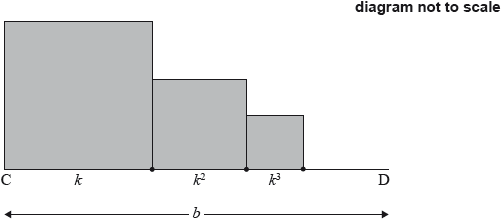| Date | May 2019 | Marks available | 5 | Reference code | 19M.2.AHL.TZ1.H_11 |
| Level | Additional Higher Level | Paper | Paper 2 | Time zone | Time zone 1 |
| Command term | Show that | Question number | H_11 | Adapted from | N/A |
Question
Consider the equation , where , , , .
The equation has three distinct real roots which can be written as , and .
The equation also has two imaginary roots, one of which is where .
The values , , and are consecutive terms in a geometric sequence.
Show that .
Show that one of the real roots is equal to 1.
Given that , find the other two real roots.
Markscheme
* This question is from an exam for a previous syllabus, and may contain minor differences in marking or structure.
recognition of the other root (A1)
M1A1
Note: Award M1 for sum of the roots, A1 for 3. Award A0M1A0 for just .
(M1)
A1
AG
[5 marks]
METHOD 1
let the geometric series be , ,
M1
A1
hence one of the roots is R1
METHOD 2
M1
A1
hence one of the roots is R1
[3 marks]
METHOD 1
product of the roots is (M1)(A1)
A1
sum of the roots is (M1)(A1)
A1
solving simultaneously (M1)
, A1A1
METHOD 2
product of the roots M1A1
A1
EITHER
, , can be written as , , M1
attempt to solve M1
A1A1
OR
, , can be written as , , M1
attempt to solve M1
A1A1
THEN
and are (A1)
roots are −2, 4 A1
[9 marks]



